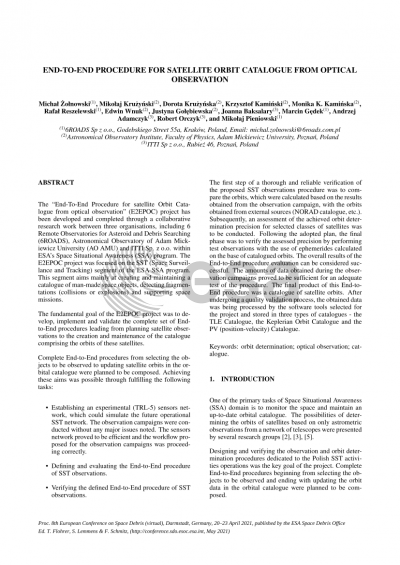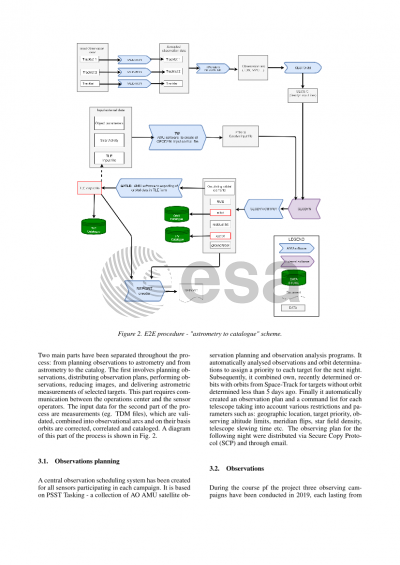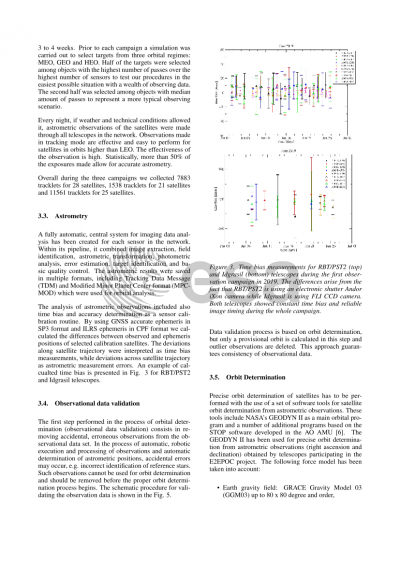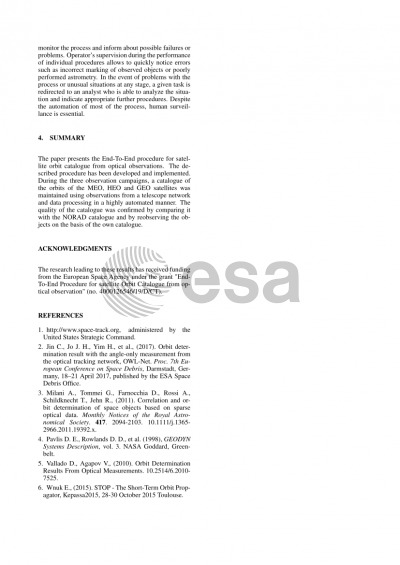Document details

Abstract
The “End-To-End Procedure for satellite Orbit Catalogue from optical observation” (E2EPOC) project (no. 4000126546/19/D/CT), has been developed and completed through a collaborative research work between three organisations, including 6 Remote Observatories for Asteroid and Debris Searching (6ROADS), Astronomical Observatory of Adam Mickiewicz University (AO AMU) and ITTI Sp. z o.o. within ESA’s Space Situational Awareness (SSA) program. The E2EPOC project was focused on the SST (Space Surveillance and Tracking) segment of the ESA SSA program. This segment aims mainly at creating and maintaining a catalogue of man-made space objects, detecting fragmentations (collisions or explosions) and supporting space missions.
The fundamental goal of the E2EPOC project was to develop, implement and validate the complete set of End-to-End procedures leading from the planning of the satellite observations to the creation and maintenance of the catalogue comprising the orbits of these satellites.
Complete End-to-End procedures from selecting the objects to be observed to updating the orbits data in the orbital catalogue were planned to be composed. Achieving these aims was possible through fulfilling the following tasks:
Establishing an experimental (TRL-5) sensors network, which could simulate the future operational SST network. The observation campaigns were conducted without any major issues noted. The sensors network proved to be efficient and the workflow proposed for the observation campaigns was proceeding correctly.
Defining and evaluating the End-to-End procedure of SST observations.
Verifying the defined End-to-End procedure of SST observations.
The first step of a thorough and reliable verification of the proposed SST observations procedure was to compare the orbits, which were calculated based on the results obtained from the observation campaign, with the orbits obtained from external sources (NORAD catalogue, etc.). Subsequently, an assessment of the achieved orbit determination precision for selected classes of satellites was to be conducted. Following the adopted plan, the final phase was to verify the assessed precision by performing test observations with the use of ephemerides calculated on the base of catalogued orbits.
The overall results of the End-to-End procedure evaluation can be considered successful. The amounts of data obtained during the observation campaigns proved to be sufficient for an adequate test of the procedure.
The final product of this End-to-End procedure was a catalogue of satellite orbits. After undergoing a quality validation process, the obtained data was being processed by the software tools selected for the project and stored in three types of catalogues - the TLE Catalogue, the Keplerian Orbit Catalogue and the PV (position-velocity) Catalogue.
Preview








